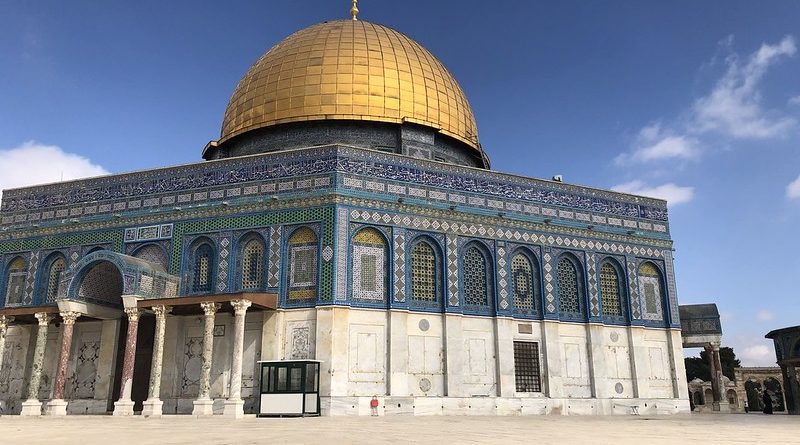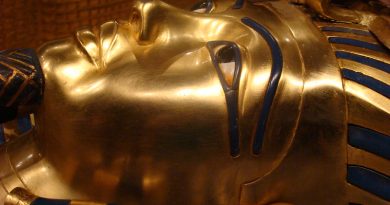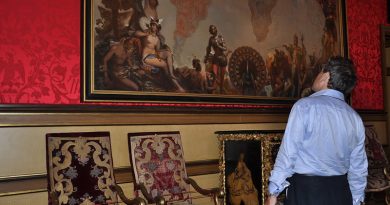Must See Mosques of the World
Take a look at ten of the most beautiful Mosques in the world. From the stunning architecture to the intricate geometric tiling and ancient calligraphy, a visit to one of these places of worship is sure to take your breath away!
ISTANBUL, Turkey
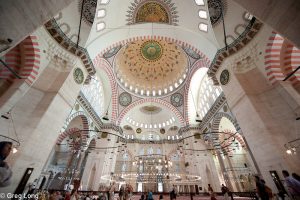
Suleymaniye Mosque by Greg Long, Flickr
Positioned on the legendary Silk Road, Istanbul is one of the world’s most culturally rich cities. Having served as the capital for the Roman Empire, the Byzantine Empire, the Latin Empire and the Ottoman Empire, Istanbul is rooted in millennia of history, with all these influences still keenly felt in the thriving metropolis. Culturally diverse, the city is one of the Arab World’s most spectacular strongholds and is home to the magnificent Suleymaniye Mosque. One of Istanbul’s cultural symbols, located on the city’s Third Hill, the Mosque is a visually beautiful landmark, adorned with beautiful artwork and designs. A significant example of Ottoman architecture, the Mosque is an enormous complex, which showcases Istanbul’s rich cultural history.
ISFAHAN, Iran
Iran’s third largest city, Isfahan is renowned across the world for its stunning Islamic architecture, which is reflected in the city’s magnificent Mosques. Among the most spectacular of these is the Imam Mosque, situated in Isfahan’s Nagsh-I Jahan Square. Considered one of the most enduring architectural masterpieces of Persian culture, the Mosque is highly regarded for its dazzling multicolored mosaics and calligraphic inscriptions. A UNESCO world heritage site, the Mosque is an awe-inspiring architectural and religious treasure, among the most beautiful in the world.
MECCA, Saudi Arabia
Inarguably the most important place in the Arab faith as the birthplace of the Prophet Muhammad, it is obligatory for all practising Muslim to make a pilgrimage to Mecca at least once in their lifetime. Islam’s holiest city, Mecca attracts over 15 million visitors a year, the majority of whom do so on the pilgrimage known as the Hajj, a symbol of the Muslim people’s devotion and solidarity to Allah.
Mecca is also the location of the Muslim religion’s holiest site the Ka’aba, a large stone structure, cube in shape, in the middle of Al-Masjid Al-Haram, otherwise known as The Sacred Mosque, the largest and oldest Mosque on the planet, which covers an area of 88.2 acres. When Muslims pray, they are expected to do so facing in the direction of the Kaaba, which is known as the Qibla.
Although non-Muslims are not allowed to enter the city, due to the sheer number of pilgrimages made to the holy site, it is one of the Arab world’s most cosmopolitan cities. One of the most unique cities in the world, Mecca’s importance to the Muslim religion cannot be understated.
DAMASCUS, Syria
One of the oldest continuously inhabited cities in the world, Damascus is one of the Arab world’s most culturally and historically fascinating cities, having spent long periods of time under Islamic Arab and Ottoman rule, and the influences of both cultures continue to resonate there today. Home to several spectacular Mosques, the most notable and magnificent of which is inarguably the Umayyad Mosque. Located in the city’s old Quarter, the site is believed by some Muslims to be the fourth-holiest site in the Islamic religion as well as the site where Jesus will return to in the End of Days according to the Qur’an. Built on the site of a Christian basilica commemorating John the Baptist shortly after the Arab conquest of Damascus in 634, the Umayyad Mosque is amongst the oldest and largest in the world.
JERUSALEM
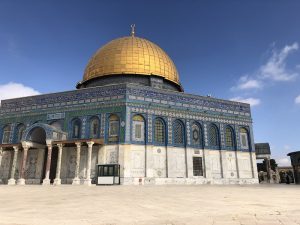
The Dome of the Rock, Jerusalem by Patrick McKay
Despite being entrenched in conflict for centuries between Arab and Israeli factions, the Holy Land remains a place of extreme importance for followers of Christian, Muslim and Jewish faiths. The Dome of the Rock, a place of worship constructed around 691 CE at the behest of Arab ruler Abd al-Malik, is arguably the city’s most religiously important site. A spectacular building with a magnificent gold dome, Byzantine architectural influences are clear on the Dome of the Rock. As the location of the Foundation Stone and the Well of Souls, the Dome of the Rock is a highly important site for all Abrahamic religions.
CAIRO, Egypt
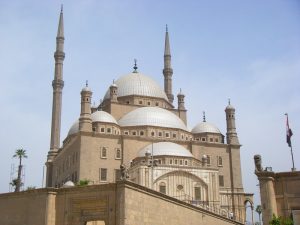
Mosque of Mohammed Ali, By Crystal, Flickr Commons
Commonly nicknamed ‘the city of a thousand minarets’, Cairo is considered one of the most spectacular Arab cities in the world. Arguably the most notable of Cairo’s mosques is the Mosque of Muhammad Ali, built in the early 19th century by the high-powered Ottoman Muhammad Ali Pasha in honour of his deceased son.
The largest mosque on the planet at the time of its construction, it is one of Cairo’s principal tourist attractions. A magnificent work of Ottoman architecture, the Mosque is one of Cairo’s most spectacular landmarks, and can be glimpsed when entering the city from any area.
Other notable Mosques in Egypt include the Mosque of Amir ibn al-As, the first Mosque ever constructed in Egypt and the entire African continent, originally built in 642 AD. While nothing of the initial structure remains intact today due to repeated rebuilding, it remains a major landmark in Cairo, situated in the city’s Old Quarter. Despite being active with a devoted and large congregation, when ceremonies and prayers are not happening, it is open to the general public, attracting many tourists.
CASABLANCA, Morocco
Morocco’s largest and most cosmopolitan city, Casablanca is a city of many cultural and religious facets, with Christians, Muslims and Jews all represented despite being a predominantly Islam country. Casablanca is also home to the magnificent Hassan II Mosque, the largest in both Morocco and Africa in addition to being the seventh largest in the world. Overlooking the Atlantic Ocean, the Mosque was designed by French architect Michel Pinseau following the death of King Hassan II. Featuring the world’s tallest minaret, topped with a laser, which points towards Mecca, the Mosque also has a massive capacity of 105,000 worshippers. One of Casablanca’s most spectacular cultural landmarks, the Hassan II Mosque is one of the world’s most stunning places of worship.
MUSCAT, Oman
The Sultanate of Oman’s capital Muscat is one of the most culturally diverse Muslim cities on the planet, composed of Arabs, Hindus, Swahilis and Balochis (Iranian Sunnis) amongst others. It is believed that there are twelve distinct languages native to Omani residents. As an Arab nation, 75% of the population is Muslim and the country’s most prominent place of worship is the Sultan Qaboos Grand Mosque, established over a decade ago in 2001. Made from 300,000 tonnes of Indian sandstone, the Mosque is one of the most elaborately designed in the world, with a number of notable features. Indeed, the Mosque is home to the world’s second-largest handwoven carpet, stretching out 416,000 metres as well as the world’s largest chandelier, measured at an astonishing 14 metres!
JAKARTA, Indonesia
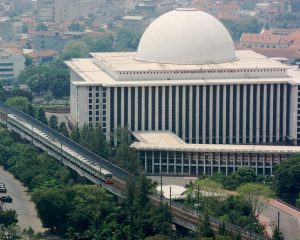
The capital city of the world’s fourth most populous country, Jakarta is a thriving multicultural metropolis and home to a huge diversity of cultures and religions. However, Islam is the largest religion amongst natives by an overwhelming majority, with 85.36% of residents adhering to the Muslim faith. Consequently, the city is home to a substantial number of magnificent Mosques, including the Cut Mutiah Mosque.
The most spectacular of them all is the Istiqlal Mosque, the largest Mosque in the entirety of South-east Asia. Translated into English as the ‘Independence Mosque’, it was established in 1978 to celebrate Indonesia’s new-found independence as a state. Positioned in the heart of Jakarta, near Merdeka Square and the Jakarta Cathedral, the Mosque attracts a number of tourists, which have increased substantially since the visit of current US President Barack Obama. Numerous other foreign politicians have visited the monolithic structure, including former US President Bill Clinton, former Iranian President Mahmoud Ahmadinejad, German Chancellor Angela Merkel and Prince Charles of the United Kingdom amongst others. Considered one of modern-day Indonesia’s cultural symbols, the Mosque is a sight to behold for people of all faiths, as well as a magnificent monument to the Muslim religion.
DJENNE, Mali
This amazing structure may not be the most beautiful , but it’s definitely one of the most fascinating. A town with a population of nearly 33,000 people, despite its relative small size, Djenne is one of Mali’s most culturally interesting places, renowned internationally for its unique adobe architecture.
The greatest example of this is doubtlessly the Great Mosque of Djenne, built along the flood banks of the Bani River. Although the first mosque was built around the 13th Century, the structure located there today dates back to the beginning of the 20th Century. A UNESCO World Heritage Site, the Mosque is not only the pillar of Djenne’s community, but also one of the most prominent African Islamic landmarks on the planet.

